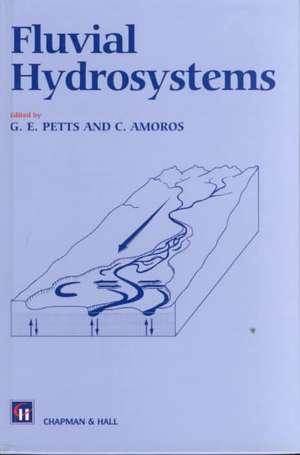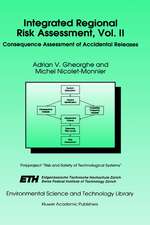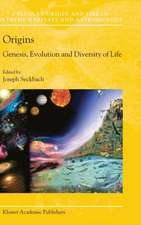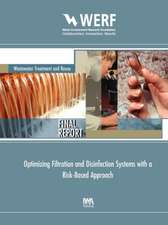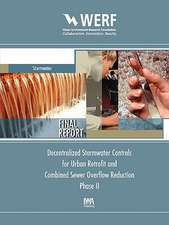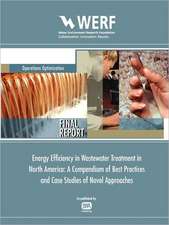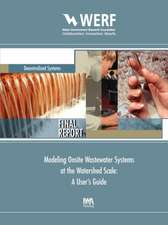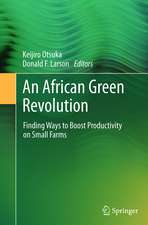Fluvial Hydrosystems
Editat de G.E. Petts, C. Amorosen Limba Engleză Hardback – 30 sep 1996
| Toate formatele și edițiile | Preț | Express |
|---|---|---|
| Paperback (1) | 1001.02 lei 6-8 săpt. | |
| SPRINGER NETHERLANDS – 20 sep 2011 | 1001.02 lei 6-8 săpt. | |
| Hardback (1) | 952.72 lei 6-8 săpt. | |
| SPRINGER NETHERLANDS – 30 sep 1996 | 952.72 lei 6-8 săpt. |
Preț: 952.72 lei
Preț vechi: 1161.85 lei
-18% Nou
Puncte Express: 1429
Preț estimativ în valută:
182.31€ • 190.73$ • 151.44£
182.31€ • 190.73$ • 151.44£
Carte tipărită la comandă
Livrare economică 02-16 aprilie
Preluare comenzi: 021 569.72.76
Specificații
ISBN-13: 9780412371004
ISBN-10: 0412371006
Pagini: 322
Ilustrații: XII, 322 p.
Dimensiuni: 155 x 235 x 21 mm
Greutate: 0.65 kg
Ediția:1996
Editura: SPRINGER NETHERLANDS
Colecția Springer
Locul publicării:Dordrecht, Netherlands
ISBN-10: 0412371006
Pagini: 322
Ilustrații: XII, 322 p.
Dimensiuni: 155 x 235 x 21 mm
Greutate: 0.65 kg
Ediția:1996
Editura: SPRINGER NETHERLANDS
Colecția Springer
Locul publicării:Dordrecht, Netherlands
Public țintă
ResearchCuprins
1 The fluvial hydrosystem.- 1.1 The background.- 1.2 Traditional approaches.- 1.3 The fluvial hydrosystem approach.- 2 A drainage basin perspective.- 2.1 The context.- 2.2 Source area characteristics.- 2.3 Large basins.- 2.4 Basin history.- 2.5 Biological responses.- 2.6 The fluvial hydrosystem approach.- 3 Hydrological and hydrochemical dynamics.- 3.1 Introduction.- 3.2 Headwater streams.- 3.3 Large rivers.- 3.4 Concluding remarks.- 4 Geomorphology of temperate rivers.- 4.1 Introduction.- 4.2 Fundamental principles.- 4.3 Channel adjustment.- 4.4 The longitudinal dimension.- 4.5 The vertical dimension.- 4.6 The transverse dimension.- 4.7 Valley fills and floodplain sedimentology.- 5 Hydrological and geomorphological structure of hydrostreams.- 5.1 Introduction.- 5.2 The main types of functional sector.- 5.3 Patchwork dynamics.- 6 Primary production and primary producers.- 6.1 Introduction.- 6.2 Adaptive strategies.- 6.3 Distribution and production.- 6.4 Conclusion.- 7 Aquatic invertebrates.- 7.1 Introduction.- 7.2 Longitudinal patterns: macroscale.- 7.3 Spatial variation within functional sectors: mesoscale.- 7.4 Spatial variation within each functional unit: microscale.- 7.5 Temporal dynamics.- 7.6 Conclusion.- 8 Fish populations in rivers.- 8.1 Introduction.- 8.2 The longitudinal zonation of watercourses.- 8.3 Use of floodplain biotopes by fish.- 8.4 The impacts of river management schemes.- 9 Interactions between units of the fluvial hydrosystem.- 9.1 Introduction.- 9.2 Nature and effect of exchanges and interactions.- 9.3 Topological effects.- 9.4 Connectivity and temporal variations.- 10 Ecological successions.- 10.1 Definitions and concepts.- 10.2 Modes and mechanisms.- 10.3 Stability and different spatial and temporal scales.- 11 Human impacts on fluvial hydrosystems.- 11.1 Catchment scale impacts.- 11.2 Direct impacts on river beds.- 11.3 The impact of dams on fluvial hydrosystems.- 11.4 Complex impacts on hydrosystems.- 12 Fluvial hydrosystems: a management perspective.- 12.1 Background.- 12.2 Rationale for river rehabilitation.- 12.3 The scientific basis.- 12.4 Options for managing fluvial hydrosystems.- 12.5 Catchment management.- 12.6 Conclusion.- References.
Recenzii
`Students of environmental science, ecology, geomorphology and civil engineering will all benefit from this textbook.'
Water Bulletin
`After reading it, I pondered for a long time over what made it good and finally concluded that in this case it was the whole instead of the parts. The text is very well written, easy to read and comprehend, interesting in its presentation, practically void of mathematical equations, and contains an excellent reference listing of over 500 publications. in conclusion, I highly recommend this book for anyone working in the water resource field who esires a better understanding of large river systems. All of us can learn from this book, and it will become a valuable addition to one's library, used frequently, and will not sit gathering dust.'
Journal of the American Water Resources Association, 34:3 (1998)
Water Bulletin
`After reading it, I pondered for a long time over what made it good and finally concluded that in this case it was the whole instead of the parts. The text is very well written, easy to read and comprehend, interesting in its presentation, practically void of mathematical equations, and contains an excellent reference listing of over 500 publications. in conclusion, I highly recommend this book for anyone working in the water resource field who esires a better understanding of large river systems. All of us can learn from this book, and it will become a valuable addition to one's library, used frequently, and will not sit gathering dust.'
Journal of the American Water Resources Association, 34:3 (1998)
